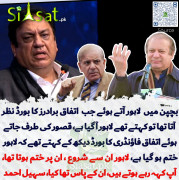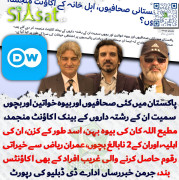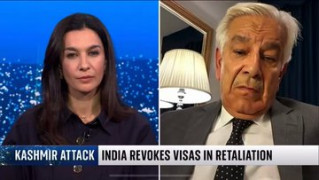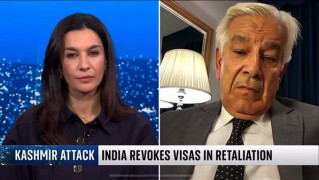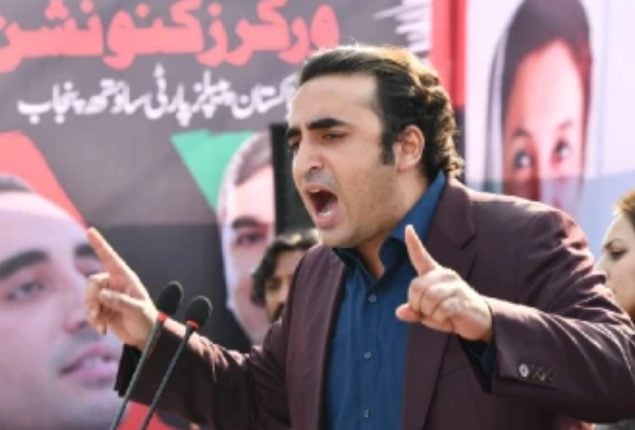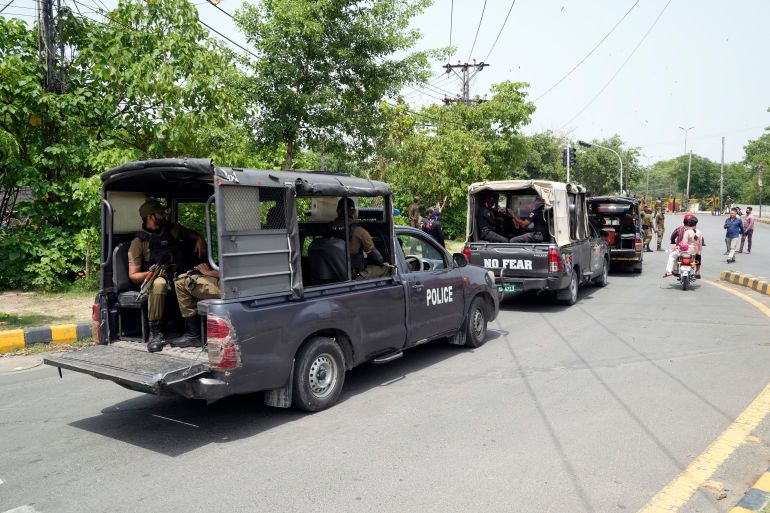Qalandari
Banned
Throughout history, few names have inspired such terror as "Tamerlane."
That was not the Central Asian conqueror's actual name, though. More properly, he is known as Timur, from the Turkic word for "iron."
Amir Timur is remembered as a vicious conqueror, who razed ancient cities to the ground and put entire populations to the sword. On the other hand, he is also known as a great patron of the arts, literature, and architecture. One of his signal achievements is his capital at the beautiful city of Samarkand, in modern-day Uzbekistan.
A complicated man, Timur continues to fascinate us some six centuries after his death.
Timur's Early Life:
Timur was born in 1336, near the city of Kesh (now called Shahrisabz), about 50 miles south of the oasis of Samarkand, in Transoxiana.
The child's father, Taragay, was the chief of the Barlas tribe. The Barlas were of mixed Mongolian and Turkic ancestry, descended from the hordes of Genghis Khan and the earlier inhabitants of Transoxiana. Unlike their nomadic ancestors, the Barlas were settled agriculturalists and traders.
Ahmad ibn Muhammad ibn Arabshah's 14th century biography, "Tamerlane or Timur: The Great Amir," stated that Timur was descended from Genghis Khan on his mother's side; this probably is not true.
Disputed Causes of Timur's Lameness:
The European versions of Timur's name -- "Tamerlane" or "Tamberlane" -- are based on the Turkic nickname Timur-i-leng, meaning "Timur the Lame."
Timur's body was exhumed by a Russian team lead by archaeologist Mikhail Gerasimov in 1941, and they found evidence of two healed wounds on Timur's right leg. His right hand was also missing two fingers.
The anti-Timurid author Arabshah says that Timur was shot while stealing sheep. More likely, he was wounded in 1363 or 1364, while fighting as a mercenary for Sistan (southeastern Iran) as stated by contemporary chroniclers Ruy Clavijo and Sharaf al-Din Ali Yazdi.
Transoxiana's Political Situation:
During Timur's youth, Transoxiana was riven by conflict between the local nomadic clans and the sedentary Chagatay Mongol khans who ruled them.
The Chagatay had abandoned the mobile ways of Genghis Khan and their other ancestors, and taxed the people heavily in order to support their urban lifestyle. Naturally, this angered their citizens.
In 1347, a local amir ("prince") named Kazgan seized power from the Chagatay ruler Borolday. Kazgan would rule until his assassination in 1358.
After Kazgan's death, various warlords and religious leaders vied for power. Tughluk Timur, a Mongol warlord, emerged victorious in 1360.
Young Timur Gains and Loses Power:
Timur's uncle Hajji Beg led the Barlas at this time, but refused to submit to Tughluk Timur. The Hajji fled, and the new Mongol ruler decided to install the seemingly more pliable young Timur to rule in his stead.
In fact, Timur was already plotting against the Mongols. He formed an alliance with the grandson of Kazgan, Amir Hussein, and married Hussein's sister Aljai Turkanaga.
The Mongols soon caught on; Timur and Hussein were dethroned and forced to turn bandit in order to survive.
In 1362, the legend says, Timur's following was reduced to two: Aljai, and one other. They were even imprisoned in Persia for two months.
Timur 's Conquests Begin:
Timur's bravery and tactical skill made him a successful mercenary soldier in Persia, and he soon collected a large following. In 1364, Timur and Hussein banded together again and defeated Ilyas Khoja, the son of Tughluk Timur.
By 1366, the two warlords controlled Transoxiana.
Timur's wife died in 1370, freeing him to attack his erstwhile ally Hussein. Hussein was besieged and killed at Balkh, and Timur declared himself the sovereign of the whole region. Timur was not directly descended from Genghis Khan, so he ruled as an amir, rather than as khan.
Over the next decade, Timur seized the rest of Central Asia, as well.
Timur's Empire Expands:
With Central Asia in hand, Timur invaded Russia in 1380. He helped the Mongol Khan Toktamysh retake control, and also defeated the Lithuanians in battle.
Timur captured Herat in 1383, the opening salvo against Persia. By 1385, all of Persia was his.
With invasions in 1391 and 1395, Timur fought against his former protege in Russia, Toktamysh. The Timurid army captured Moscow in 1395.
While Timur was busy in the north, Persia revolted. He responded by leveling entire cities, and using the citizens' skulls to build grisly towers and pyramids.
By 1396, Timur had conquered Iraq, Azerbaijan, Armenia, Mesopotamia and Georgia.
Timur Conquers India, Syria, and Turkey:
Timur's army of 90,000 crossed the Indus River in September, 1398 and set upon India. The country had fallen to pieces after the death of Firuz Shah; Bengal, Kashmir and the Deccan each had separate rulers.
The Turkic/Mongol invaders left carnage along their path; Delhi's army was destroyed in December, and the city ruined. Timur seized tons of treasure and 90 war elephants, and took them back to Samarkand.
Timur looked west in 1399, retaking Azerbaijan and conquering Syria. Baghdad was destroyed in 1401, and 20,000 of its people slaughtered. In July of 1402, Timur captured Turkey and received submission from Egypt.
Timur's Final Campaign and Death:
The rulers of Europe were glad that the Ottoman Turk sultan Bayazid had been defeated, but they trembled at the idea that "Tamerlane" was at their doorstep. The rulers of Spain, France, and other powers sent congratulatory embassies to Timur, hoping to stave off an attack.
Timur had bigger goals, though. He decided in 1404 that he would conquer Ming China. (The ethnic-Han Ming Dynasty had overthrown his cousins, the Yuan, in 1368.)
The Timurid army set out in December, during an unusually cold winter. Men and horses died of exposure, and the 68-year-old Timur fell ill. He died in February, 1405 at Otrar, in Kazakhstan.
Timur's Legacy:
Timur started life as the son of a minor chieftain, much like his putative ancestor Genghis Khan. Through sheer intelligence, military skill and force of personality, Timur was able to conquer an empire stretching from Russia to India, and from the Mediterranean Sea to Mongolia.
Unlike Genghis Khan, however, Timur conquered not to open trade routes and protect his flanks, but to loot and pillage. The Timurid Empire did not long survive its founder, because he rarely bothered to put any governmental structure in place after he destroyed the existing order.
While Timur professed to be a good Muslim, he obviously felt no compunction about destroying the jewel-cities of Islam and slaughtering their inhabitants. Damascus, Khiva, Baghdad... these ancient capitals of Islamic learning never really recovered from Timur's attentions. His intent seems to have been to make his capital at Samarkand the first city of the Islamic world.
Contemporary sources say that Timur's forces killed about 19 million people during their conquests. That number is probably exaggerated, but Timur does seem to have enjoyed massacre for its own sake.
Timur's Descendants
Despite a death-bed warning from the conqueror, his sons and grandsons immediately began to fight over the throne when he passed away. The most successful Timurid ruler, Timur's grandson Uleg Beg, gained fame as an astronomer and scholar. Uleg was not a good administrator, however, and was murdered by his own son in 1449.
Timur's line had better luck in India, where his great-great-grandson Babur founded the Mughal Dynasty in 1526. The Mughuls ruled until 1857, when the British expelled them. (Shah Jahan, builder of the Taj Mahal, is thus also a descendent of Timur.)
Timur's Reputation
Timur was lionized in the west for his defeat of the Ottoman Turks. Christopher Marlowe's Tamburlaine the Great and Edgar Allen Poe's "Tamerlane" are good examples.
Not surprisingly, the people of Turkey, Iran and the Middle East remember him rather less favorably.
In post-Soviet Uzbekistan, Timur has been made into a national folk hero. The people of Uzbek cities like Khiva, however, are skeptical; they remember that he razed their city and killed nearly every inhabitant.
http://asianhistory.about.com/od/profilesofasianleaders/p/TimurProf.htm
That was not the Central Asian conqueror's actual name, though. More properly, he is known as Timur, from the Turkic word for "iron."
Amir Timur is remembered as a vicious conqueror, who razed ancient cities to the ground and put entire populations to the sword. On the other hand, he is also known as a great patron of the arts, literature, and architecture. One of his signal achievements is his capital at the beautiful city of Samarkand, in modern-day Uzbekistan.
A complicated man, Timur continues to fascinate us some six centuries after his death.
Timur's Early Life:
Timur was born in 1336, near the city of Kesh (now called Shahrisabz), about 50 miles south of the oasis of Samarkand, in Transoxiana.
The child's father, Taragay, was the chief of the Barlas tribe. The Barlas were of mixed Mongolian and Turkic ancestry, descended from the hordes of Genghis Khan and the earlier inhabitants of Transoxiana. Unlike their nomadic ancestors, the Barlas were settled agriculturalists and traders.
Ahmad ibn Muhammad ibn Arabshah's 14th century biography, "Tamerlane or Timur: The Great Amir," stated that Timur was descended from Genghis Khan on his mother's side; this probably is not true.
Disputed Causes of Timur's Lameness:
The European versions of Timur's name -- "Tamerlane" or "Tamberlane" -- are based on the Turkic nickname Timur-i-leng, meaning "Timur the Lame."
Timur's body was exhumed by a Russian team lead by archaeologist Mikhail Gerasimov in 1941, and they found evidence of two healed wounds on Timur's right leg. His right hand was also missing two fingers.
The anti-Timurid author Arabshah says that Timur was shot while stealing sheep. More likely, he was wounded in 1363 or 1364, while fighting as a mercenary for Sistan (southeastern Iran) as stated by contemporary chroniclers Ruy Clavijo and Sharaf al-Din Ali Yazdi.
Transoxiana's Political Situation:
During Timur's youth, Transoxiana was riven by conflict between the local nomadic clans and the sedentary Chagatay Mongol khans who ruled them.
The Chagatay had abandoned the mobile ways of Genghis Khan and their other ancestors, and taxed the people heavily in order to support their urban lifestyle. Naturally, this angered their citizens.
In 1347, a local amir ("prince") named Kazgan seized power from the Chagatay ruler Borolday. Kazgan would rule until his assassination in 1358.
After Kazgan's death, various warlords and religious leaders vied for power. Tughluk Timur, a Mongol warlord, emerged victorious in 1360.
Young Timur Gains and Loses Power:
Timur's uncle Hajji Beg led the Barlas at this time, but refused to submit to Tughluk Timur. The Hajji fled, and the new Mongol ruler decided to install the seemingly more pliable young Timur to rule in his stead.
In fact, Timur was already plotting against the Mongols. He formed an alliance with the grandson of Kazgan, Amir Hussein, and married Hussein's sister Aljai Turkanaga.
The Mongols soon caught on; Timur and Hussein were dethroned and forced to turn bandit in order to survive.
In 1362, the legend says, Timur's following was reduced to two: Aljai, and one other. They were even imprisoned in Persia for two months.
Timur 's Conquests Begin:
Timur's bravery and tactical skill made him a successful mercenary soldier in Persia, and he soon collected a large following. In 1364, Timur and Hussein banded together again and defeated Ilyas Khoja, the son of Tughluk Timur.
By 1366, the two warlords controlled Transoxiana.
Timur's wife died in 1370, freeing him to attack his erstwhile ally Hussein. Hussein was besieged and killed at Balkh, and Timur declared himself the sovereign of the whole region. Timur was not directly descended from Genghis Khan, so he ruled as an amir, rather than as khan.
Over the next decade, Timur seized the rest of Central Asia, as well.
Timur's Empire Expands:
With Central Asia in hand, Timur invaded Russia in 1380. He helped the Mongol Khan Toktamysh retake control, and also defeated the Lithuanians in battle.
Timur captured Herat in 1383, the opening salvo against Persia. By 1385, all of Persia was his.
With invasions in 1391 and 1395, Timur fought against his former protege in Russia, Toktamysh. The Timurid army captured Moscow in 1395.
While Timur was busy in the north, Persia revolted. He responded by leveling entire cities, and using the citizens' skulls to build grisly towers and pyramids.
By 1396, Timur had conquered Iraq, Azerbaijan, Armenia, Mesopotamia and Georgia.
Timur Conquers India, Syria, and Turkey:
Timur's army of 90,000 crossed the Indus River in September, 1398 and set upon India. The country had fallen to pieces after the death of Firuz Shah; Bengal, Kashmir and the Deccan each had separate rulers.
The Turkic/Mongol invaders left carnage along their path; Delhi's army was destroyed in December, and the city ruined. Timur seized tons of treasure and 90 war elephants, and took them back to Samarkand.
Timur looked west in 1399, retaking Azerbaijan and conquering Syria. Baghdad was destroyed in 1401, and 20,000 of its people slaughtered. In July of 1402, Timur captured Turkey and received submission from Egypt.
Timur's Final Campaign and Death:
The rulers of Europe were glad that the Ottoman Turk sultan Bayazid had been defeated, but they trembled at the idea that "Tamerlane" was at their doorstep. The rulers of Spain, France, and other powers sent congratulatory embassies to Timur, hoping to stave off an attack.
Timur had bigger goals, though. He decided in 1404 that he would conquer Ming China. (The ethnic-Han Ming Dynasty had overthrown his cousins, the Yuan, in 1368.)
The Timurid army set out in December, during an unusually cold winter. Men and horses died of exposure, and the 68-year-old Timur fell ill. He died in February, 1405 at Otrar, in Kazakhstan.
Timur's Legacy:
Timur started life as the son of a minor chieftain, much like his putative ancestor Genghis Khan. Through sheer intelligence, military skill and force of personality, Timur was able to conquer an empire stretching from Russia to India, and from the Mediterranean Sea to Mongolia.
Unlike Genghis Khan, however, Timur conquered not to open trade routes and protect his flanks, but to loot and pillage. The Timurid Empire did not long survive its founder, because he rarely bothered to put any governmental structure in place after he destroyed the existing order.
While Timur professed to be a good Muslim, he obviously felt no compunction about destroying the jewel-cities of Islam and slaughtering their inhabitants. Damascus, Khiva, Baghdad... these ancient capitals of Islamic learning never really recovered from Timur's attentions. His intent seems to have been to make his capital at Samarkand the first city of the Islamic world.
Contemporary sources say that Timur's forces killed about 19 million people during their conquests. That number is probably exaggerated, but Timur does seem to have enjoyed massacre for its own sake.
Timur's Descendants
Despite a death-bed warning from the conqueror, his sons and grandsons immediately began to fight over the throne when he passed away. The most successful Timurid ruler, Timur's grandson Uleg Beg, gained fame as an astronomer and scholar. Uleg was not a good administrator, however, and was murdered by his own son in 1449.
Timur's line had better luck in India, where his great-great-grandson Babur founded the Mughal Dynasty in 1526. The Mughuls ruled until 1857, when the British expelled them. (Shah Jahan, builder of the Taj Mahal, is thus also a descendent of Timur.)
Timur's Reputation
Timur was lionized in the west for his defeat of the Ottoman Turks. Christopher Marlowe's Tamburlaine the Great and Edgar Allen Poe's "Tamerlane" are good examples.
Not surprisingly, the people of Turkey, Iran and the Middle East remember him rather less favorably.
In post-Soviet Uzbekistan, Timur has been made into a national folk hero. The people of Uzbek cities like Khiva, however, are skeptical; they remember that he razed their city and killed nearly every inhabitant.
http://asianhistory.about.com/od/profilesofasianleaders/p/TimurProf.htm





